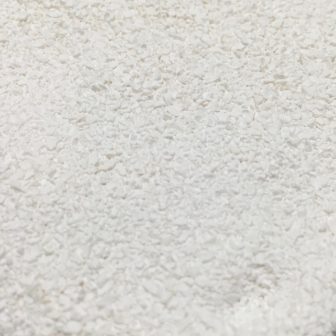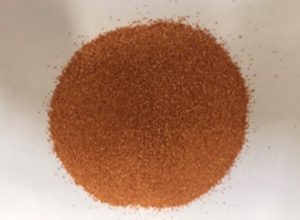AP OXIDATION MEDIA
Aqueous Solutions Global [ASG] manufactures a unique and superior oxidation product, AP Oxidation Media. The ASG, AP Oxidation Media is protected by US Patent. All ASG media products meet the ANSI Standard NSF 61: Drinking Water System Components – Health Effects.
What is oxidation and how does the ASG AP Oxidation media work?
An oxidant is a molecule, atom, or ion that loses electrons. The oxidized substance (which lost the electrons) increases in positive valence. Oxidation never occurs alone, but always occurs, with another substance, as part of the oxidation-reduction (redox) reaction. The reduced substance gains electrons and thereby, decreases in positive valance. The total number of electrons lost by one agent (reducer) to an oxidizing agent (oxidant) is the same total number of electrons gained by the substance. Oxidation results in an increase of positive valance. Examples of oxidation agents include oxygen, ozone, chlorine, peroxide, Bromine and ASG AP Oxidation Media.
ASG AP Oxidation Media will outperform comparable oxidation agents because the ASG Oxidation Media has many more oxidation sites. AP Oxidation Media rapidly and permanently changes the oxidation state of target analytes.
What is an example of oxidation utilizing AP Oxidation Media?
There are numerous technologies available to remove pentavalent Arsenic [As V] from aqueous streams. However, many of these methods are unable to remove trivalent Arsenic [As III], which is the more toxic form of Arsenic. When water containing Arsenic III, comes into direct contact with AP Oxidation Media, with a dwell time or empty bed contact time [EBCT] of 1.5 to 2 minutes, the Arsenic III is converted quickly and completely to its new valence state, Arsenic V. Arsenic in the pentavalent form can now be removed using common methods such as adsorption, ion exchange and reverse osmosis.
What is the chemistry and functionality of AP Oxidation Media?
Aqueous Solutions Global [ASG] manufactures AP Oxidation Media, Al(IO4)3 using a proprietary process, combining Alumina Oxide with Sodium Meta-Periodate, along with other enabling chemistries. AP Oxidation Media, is free of Sodium Oxide which is rinsed away in the manufacturing process, leaving only oxidation properties.
An oxidation reaction takes place in an aqueous stream when target analytes (contaminants) come in direct contact with the AP Oxidation Media granules. The reaction occurs rapidly, typically in 1.5 to 2 minutes of contact time. All ASG media, such as AP Oxidation, have exceptional oxidation kinetics and capacity properties.
Are there additional features of AP oxidation Media?
AP Oxidation Media has selective adsorption capabilities and like many other oxidation products, has anti-microbial properties as well. Bacteria are killed on contact within seconds. Meta-Periodate, a form of Iodine, is an effective anti-microbial agent. When microbes, like bacteria, come into direct contact with AP Oxidization Media, the bacteria cell wall ruptures, killing the microbes.
There are no resulting objectionable tastes, color or odor. Unlike Chlorine, there are no waste streams or harmful by-products that could be introduced into the environment. No Chlorine/dechlorination steps are required.
Highly Alkaline or Highly Acidic fluids passing through the ASG AP Oxidation Media will be “buffered” toward a more neutral pH.
The ASG AP Oxidation Media will pass both TCLP and WET tests, for economically non-hazardous solid waste disposal. Unlike adsorption resins, AP Oxidation Media can be repurposed as a substitute for sand for making high strength concrete.
The easy to install and operate ASG AP Oxidation Media has been used successfully in hundreds of field applications with complete customer satisfaction.


